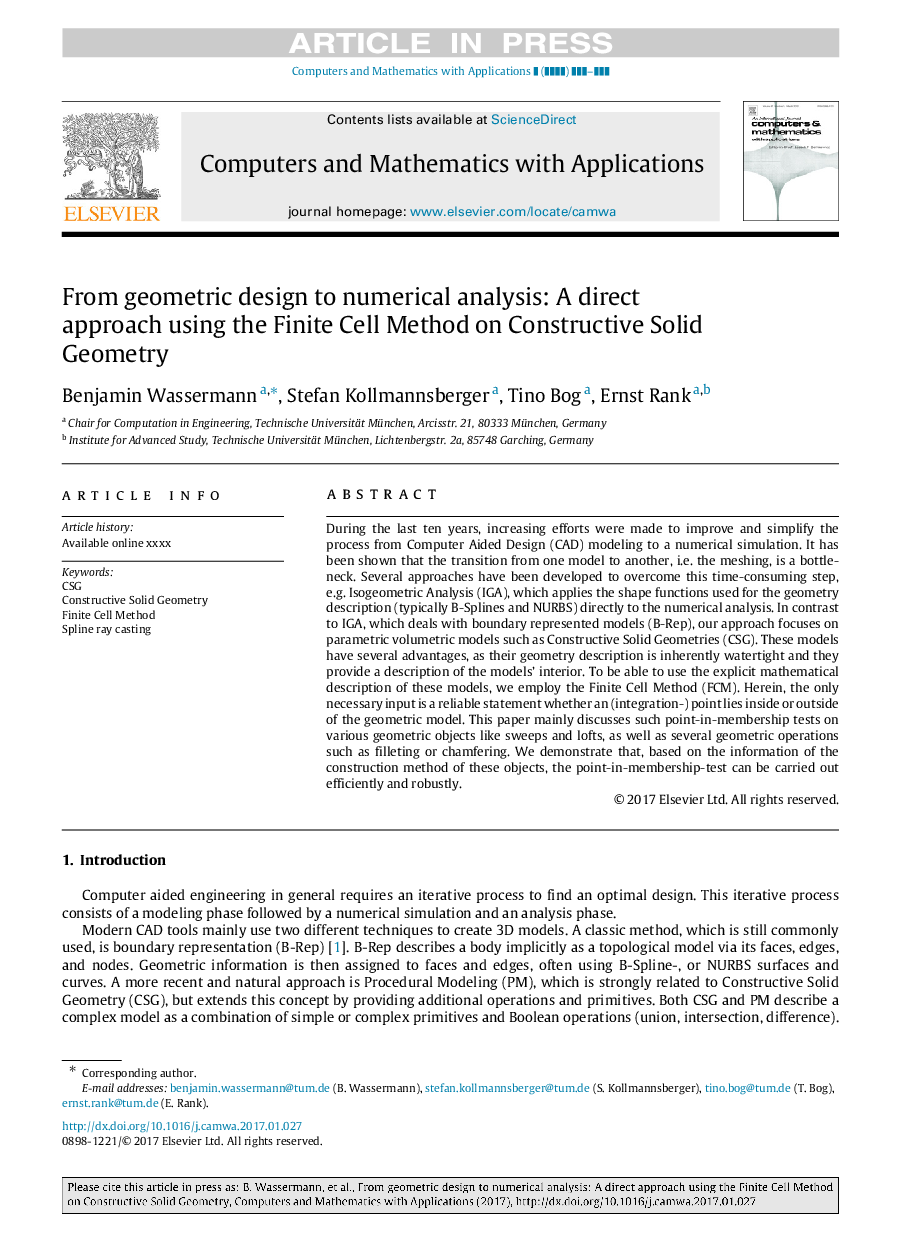| Article ID | Journal | Published Year | Pages | File Type |
|---|---|---|---|---|
| 4958363 | Computers & Mathematics with Applications | 2017 | 24 Pages |
Abstract
During the last ten years, increasing efforts were made to improve and simplify the process from Computer Aided Design (CAD) modeling to a numerical simulation. It has been shown that the transition from one model to another, i.e. the meshing, is a bottle-neck. Several approaches have been developed to overcome this time-consuming step, e.g. Isogeometric Analysis (IGA), which applies the shape functions used for the geometry description (typically B-Splines and NURBS) directly to the numerical analysis. In contrast to IGA, which deals with boundary represented models (B-Rep), our approach focuses on parametric volumetric models such as Constructive Solid Geometries (CSG). These models have several advantages, as their geometry description is inherently watertight and they provide a description of the models' interior. To be able to use the explicit mathematical description of these models, we employ the Finite Cell Method (FCM). Herein, the only necessary input is a reliable statement whether an (integration-) point lies inside or outside of the geometric model. This paper mainly discusses such point-in-membership tests on various geometric objects like sweeps and lofts, as well as several geometric operations such as filleting or chamfering. We demonstrate that, based on the information of the construction method of these objects, the point-in-membership-test can be carried out efficiently and robustly.
Related Topics
Physical Sciences and Engineering
Computer Science
Computer Science (General)
Authors
Benjamin Wassermann, Stefan Kollmannsberger, Tino Bog, Ernst Rank,
